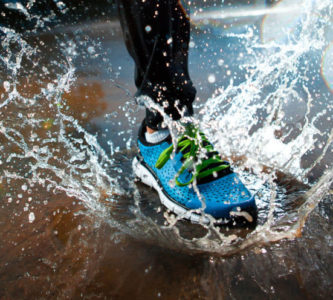 The snow is melting, and if you’re like me, your Facebook feed is already starting to fill up with people who are excited about or who just completed their first outdoor run of 2017. That first run outdoors after a long winter is always enjoyable, but you also need to take some precautions in order to be safe.
The snow is melting, and if you’re like me, your Facebook feed is already starting to fill up with people who are excited about or who just completed their first outdoor run of 2017. That first run outdoors after a long winter is always enjoyable, but you also need to take some precautions in order to be safe.
Running Outside
There are a number of things to keep in mind as you prepare for your first spring run. Here are four tips for staying safe.
1. Shoe Upkeep – If you’re like a lot of people, you decided not to replace your running shoes at the end of the season, or they lost some tread during a bevy of indoor runs this winter. Odds are your running shoes aren’t in the best of shape, and that’s especially problematic during the first few runs outside. Odds are there will still be some slippery spots, so you’ll want a shoe with good traction. Also, there will be puddles everywhere, so if you have even a tiny hole in your shoes, you’ll feel it quick during your spring run. Invest in a new pair of shoes if yours are worn out before heading outside this season.
2. Take It Slow – Running outside is different that running on a track or treadmill. You’ll be working a number of different muscles as you traverse much more uneven terrain, so don’t assume you’ll be able to run as far as you’ve been running at the gym. Let these muscles ease back into gear, because over-stressing them can lead to injury. This is even more vital if you invested in a new pair of running shoes, because you never really know how your feet are going to react to your new shoes until you break them in a little. Take it a little easier on your first couple runs outdoors.
3. Be Bright – Not only does it get darker in the early springtime compared to the summer, but drivers aren’t always as alert for runners in February as they are in June and July. Because of this, always wear bright reflective clothing during your spring runs. Also, even though you have the right of way, don’t always assume the driver is going to heed the crosswalk. Keep your head on a swivel at all times, especially during your first few runs of the season.
4. Dry Feet – Even if your shoes don’t have holes, your socks may get wet from running through puddles or from sweat. Wet feet can chaff or lead to blisters and sores, so cut your run short if you notice that your feet are getting wet. Or, if you’re determined to finish your run, carry an extra set of socks just in case your first pair get wet during your run.